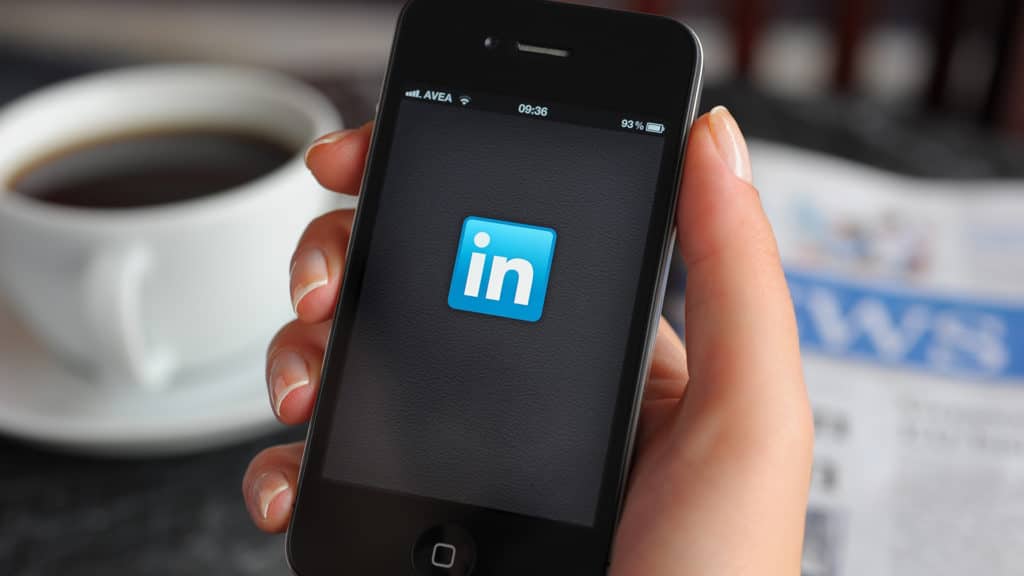2021 LinkedIn Marketing Guide

LinkedIn was literally built for business. But many organizations overlook something else that sets it apart from most social media platforms: It’s relatively easy to write a post and organically reach a large audience without paying for advertising or to boost your content, says LinkedIn expert Brian Wallace, founder and president of the marketing and advertising agency NowSourcing.
“LinkedIn is easily our largest sales channel, and it’s the only social network that isn’t firewalled off,” he says. “They leave it wide open.”
For the most part, LinkedIn’s algorithm is easy to understand: The posts people see are based on their past interests and interactions, Wallace says. And unlike platforms like YouTube and Facebook, it’s easier to stand out from the crowd and connect with the site’s 774 million users.
“Fewer than 1% of the platform bothers to create original content. If you make quality content, by all rights, you should win,” Wallace says.
But how does an association create content and a brand that resonates with a broader audience? Read on for tips on how to up your 2021 LinkedIn marketing game.
Expand Your Network
Your LinkedIn followers and connections are your built-in audience. They’re the ones who see your content and can comment, share and react to it. But many companies make the mistake of not putting enough energy behind building their LinkedIn network, Wallace says.
That’s where associations have a leg up on other companies. Not only do you have employees to connect with, but also a host of association members and potentially board members, too. The larger your network, the more reach you have. (Although the quality of your followers should take precedence over the quantity.)
Building your network will take time, but it’s relatively easy to do. Here’s how:
- Ask your employees and members to follow you on LinkedIn. The average employee network has 10 times the number of connections that a company does, according to LinkedIn.
- Add a LinkedIn follow button to your website, newsletter and anywhere else you communicate your association’s message.
- Join LinkedIn Groups so you can mingle with like-minded professionals to connect and share insights.
- Spring for LinkedIn Premium, which gives you invaluable insight into who visits your LinkedIn page. “Unless they have a closed account, you can see everyone who has looked at your profile versus just the last three people if you don’t have premium,” Wallace says. “There is some real magic that comes from not everyone being able to see what’s in the treasure chest.”
Spruce up Your Profile
Think of your LinkedIn page like your dating profile (a work-appropriate version, of course). The images you choose and the language you use to describe your association can make a difference in whether people swipe right or not. “Once people are on your profile, that could be the end of it, or that could be the start of something great,” Wallace says.
First and foremost, fill out as much information as possible. Pages with complete information get 30% more views, according to LinkedIn. Use all the tools available to you, including newer features, such as voice notes, which let you record a short audio message on your profile. (Wallace uses the feature on his own LinkedIn page as a greeting.)
Take special care when crafting your “About” section. This section should have a similar tone as your other marketing materials, but make sure it’s not dry, jargony or overly workshopped. You want to quickly convey what your company does, what your mission is and what sets you apart in the industry. Intel and Airbnb’s profile pages are good examples of brief, but impactful, “About” sections.
Building Your Content Strategy
If the phrase “content strategy” gives you the willies — don’t fret. You don’t have to invest in a big-budget content plan to build a successful marketing presence on LinkedIn, Wallace says. Here are a few tips:
Post often, but don’t oversaturate. At least twice a week is best, Wallace says, but don’t feel pressure to post every day. In fact, your return on investment drops after posting more than five times a week, according to Hubspot research. The best days to post on LinkedIn are Tuesday through Friday.
Follow the 70-20-10 rule. The 70-20-10 rule is a simple formula that states that 70% of your content should be original and informative. Then 20% should be content you share that was created by someone else but is still of interest to your connections. “Sharing things you like is a form of content creation, too,” Wallace says. The remaining 10% can be purely promotional — calls for membership or promoting a certification or new class.
Plan for a mixture of content. Mixing up your type of content — long and short, blogs, status updates, job listings, association profiles — ensures that you appeal to a wider audience. The best sign of whether your content is resonating with your followers is your analytics, Wallace says. How much time are people spending on your posts? What type of posts are being shared and commented on the most? It’s a good idea to get inspiration from other businesses in your field, but stick to what interests your followers and what you’re good at, Wallace says.
Creating Content That Resonates
If you write it, will they come? There might not be a magical recipe to guarantee more eyeballs on your LinkedIn marketing content, but there are certainly good practices that help. (And if you’re ever stumped for ideas, here’s how to use LinkedIn’s Content Suggestions feature.)
Be human. One of the most important aspects of successful LinkedIn marketing is to sound human, Wallace says. “LinkedIn is pretty business-minded, but people want to do business with people. Your content should sound like it has a human behind it,” Wallace says. In an Adzooma survey, 51.2% of respondents said they bought something from a brand because of the brand’s online voice and 35.1% prefer brands to have a friendly/conversational tone.
Be honest. People can smell inauthenticity a mile away, Wallace says. Instead, aim for something that’s vulnerable, honest and real to your brand. Take a recent example of a short LinkedIn post by writer Niharikaa Kaur Sodhi that went viral with more than 1 million views in 12 hours. The post simply said, “Today I officially start my journey of being self-employed as a writer.” The directness and lack of self-promotion connected with LinkedIn’s audience.
Give them something to talk about. “If you want to get lots of engagement on your LinkedIn posts, don’t write content that only appeals to a tiny group of experts. Instead, post stuff that your mom could comment on,” Brian Dean, the founder of SEO training site, Backlinko, said in an Inc. article. Sometimes the posts that resonate most with people are maybe only adjacently related to your business. That’s true of Dean’s own most successful LinkedIn posts:
- Haters and online trolls (164,000 views)
- Popups (97,000 views)
- Flying business class vs. coach (278,000 views)
If you truly have something relevant to say on a trending topic, that can be a great way to get engagement on a LinkedIn post, Wallace says. At the same time, don’t forget to market your own expertise on topics you know a lot about.
Experiment with format. With all the talk about people’s short attention spans, you might be surprised to hear that people most like to read long-form content of around 1,900 to 2,000 words on LinkedIn. That’s according to an analysis by OKDork of 3,000 high-performing LinkedIn posts. Other takeaways from the analysis include:
- Posts with images do well, with eight images as the sweet spot. (Posts with images receive 98% more comments than those without, according to LinkedIn.)
- Headlines poised as a question do poorly, but posts that end by asking a question are good for engagement.
- Posts with a neutral tone perform better than those with a positive or negative tone.
- Lists and especially “how to” posts are very popular on LinkedIn.
Venture into video. It’s well worth wading into the video space. Videos are a great way to put a human face on your company, Wallace says. And 87% of marketers feel video gives them a good return on their investment, according to the State of Video Marketing Survey 2021.
Boosting your marketing efforts on LinkedIn is a chance to network with other professionals and create a reputation as a leader in your field. Just be sure to peek out from behind your company logo to let your personality show, Wallace says.
“People want to know the people behind the brand and the association,” he says.
Tags
Related Articles
Finding Hidden Gems: Strategies for Non-Dues Revenue with Association Content
Your association already has resources that could be generating extra non-dues revenue. You just need...
Are We in a Direct Mail Renaissance?
Direct mail is having a resurgence and could help your association compete for new members,...
Six Winning Sponsorship Ideas for Your Next Meeting
Employ one of these creative sponsorship ideas that has worked for fellow association professionals.




